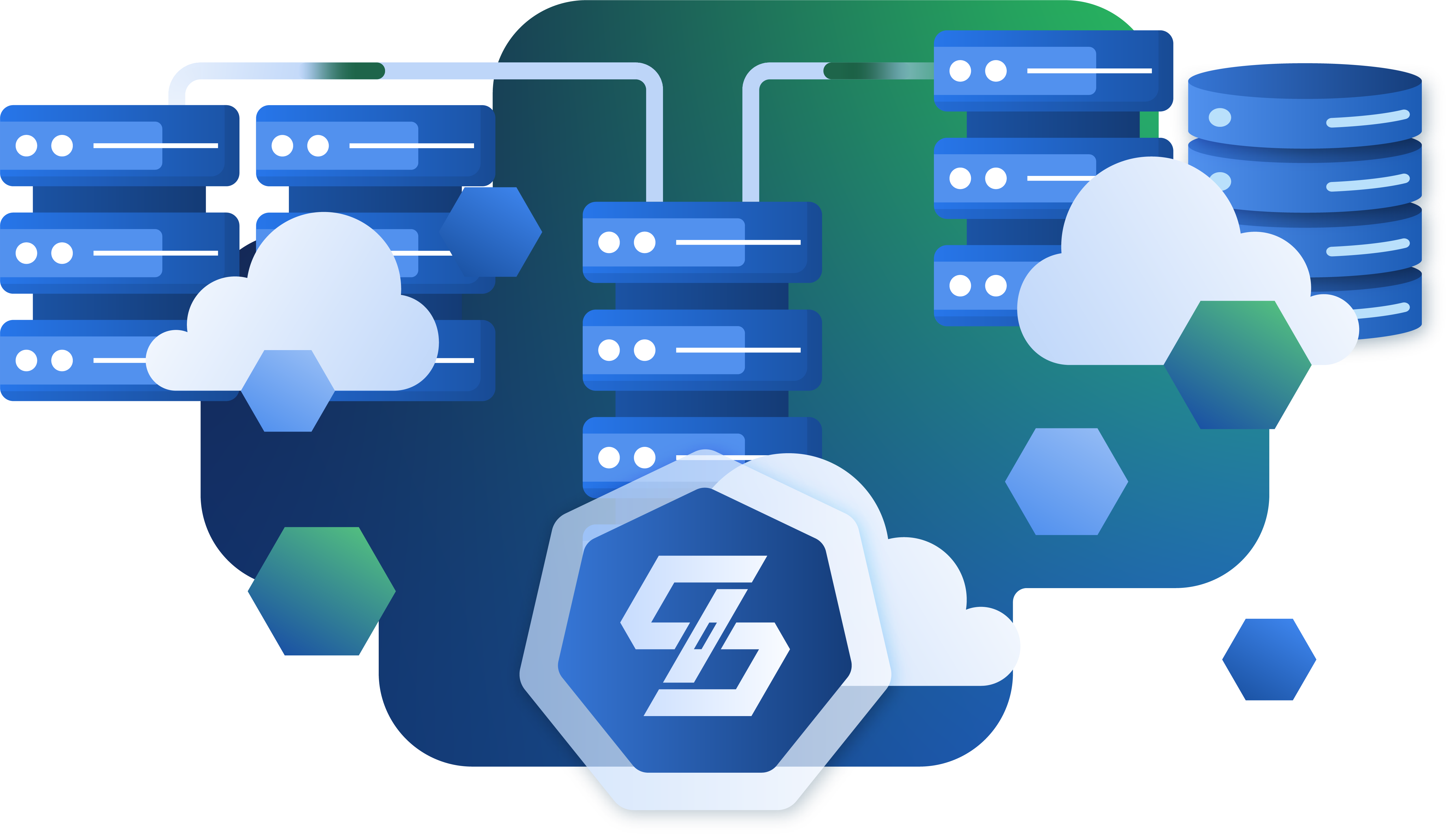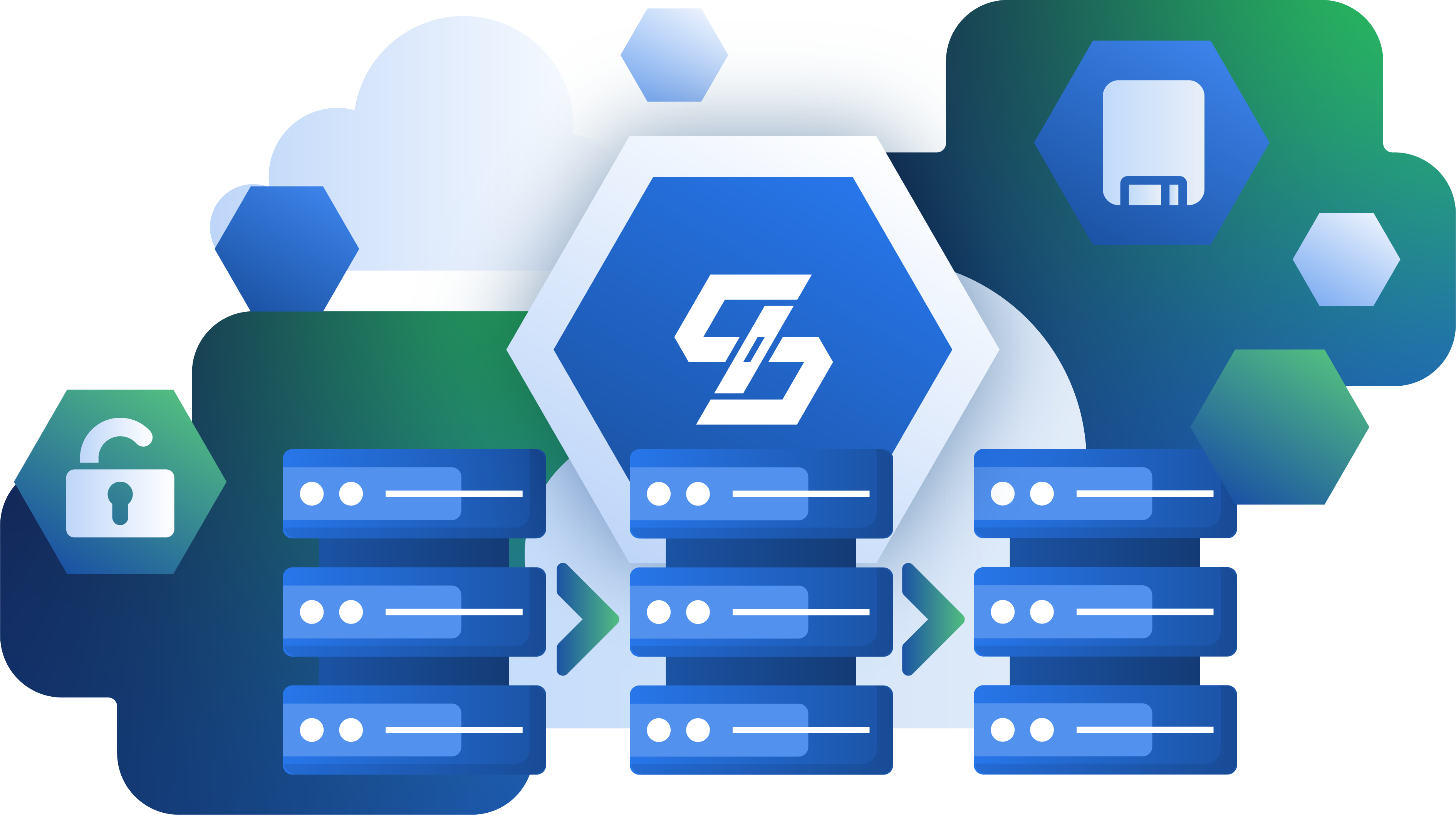Fujitsu Alternative
Smarter, Scalable and Software-Defined
Fujitsu’s storage platforms relies on proprietary hardware, legacy scaling methods, and costly maintenance contracts. If you're seeking an alternative to Fujitsu storage systems, simplyblock™ delivers a faster, more flexible, and cloud-ready software-defined storage platform—purpose-built for dynamic workloads and modern infrastructure demands. It enables teams to move faster, reduce complexity, and avoid vendor constraints that slow innovation.

Where Fujitsu Falls Behind
High Ownership Costs
Fujitsu’s hardware-first model raises long-term costs with infrastructure lock-in, recurring fees, and restrictive support terms.
Rigid Scalability
Scaling storage with Fujitsu requires controller upgrades, planned downtime, and reconfiguration across environments.
Limited Deployment Options
Fujitsu lacks flexibility for hybrid, edge, and Kubernetes-native setups—slowing innovation and infrastructure evolution.
Why Simplyblock™ Wins
Simplyblock eliminates legacy storage limits with a true software-defined model and no vendor lock-in. Its NVMe-over-TCP design connects fast block and cloud storage, cutting latency and controller complexity. With erasure coding and automated balancing, it delivers high performance, efficiency, and resilience at lower cost.
Deployment Flexibility
Fujitsu's storage architecture is heavily appliance-driven, limiting support for hybrid, edge, or Kubernetes-native environments.
As an alternative to rigid appliance-based systems, simplyblock enables flexible deployments across disaggregated, hyperconverged, and hybrid models—whether on bare-metal servers, private cloud, or containers.
No rigid hardware paths or deployment constraints—just freedom to build infrastructure your way.


Modern Architecture
Fujitsu depends on traditional controller-based systems that cap performance and require hardware upgrades to scale.
Simplyblock uses a distributed scale-out architecture where each new node adds instant capacity and speed. With NVMe-over-TCP and erasure coding, it eliminates bottlenecks and delivers fast, resilient storage with minimal overhead.
It’s built to grow seamlessly with your infrastructure—without disruption or expensive hardware cycles.
Why People Love Simplyblock™
Lower Ownership Cost
Run on standard x64 or ARM64 hardware with no hidden licensing; scale linearly without forklift upgrades.
High-Performance Architecture
Built on NVMe-over-TCP with intelligent caching and over 200K IOPS per CPU core.
Flexible Deployments
Supports disaggregated, hyperconverged, and hybrid models on Kubernetes, bare-metal, or cloud.
Resilience Built In
Multi-tenant isolation, QoS, self-healing, and near-zero RPO recovery—all out of the box.
How Simplyblock Wins Against Fujitsu
| Simplyblock | Fujitsu | Details | |
|---|---|---|---|
| Commercial Support |
|
| Simplyblock offers direct commercial support from its development team. Fujitsu often requires premium contracts for enterprise support. |
| Simplicity |
|
| Simplyblock uses native Linux NVMe-over-TCP, requiring no extra initiators. Fujitsu needs proprietary drivers and setup. |
| Deployment Flexibility |
|
| Simplyblock supports disaggregated, hyperconverged, and hybrid deployment models. Fujitsu forces rigid appliance structures. |
| Cloud-Native Design |
|
| Simplyblock was built for Kubernetes and cloud-native environments. Fujitsu focuses mainly on traditional SAN/NAS setups. |
| Commercial Support | |
|
Simplyblock
|
|
| Simplyblock offers direct commercial support from its development team. Fujitsu often requires premium contracts for enterprise support. | |
| Simplicity | |
|
Simplyblock
|
|
| Simplyblock uses native Linux NVMe-over-TCP, requiring no extra initiators. Fujitsu needs proprietary drivers and setup. | |
| Deployment Flexibility | |
|
Simplyblock
|
|
| Simplyblock supports disaggregated, hyperconverged, and hybrid deployment models. Fujitsu forces rigid appliance structures. | |
| Cloud-Native Design | |
|
Simplyblock
|
|
| Simplyblock was built for Kubernetes and cloud-native environments. Fujitsu focuses mainly on traditional SAN/NAS setups. | |
| Simplyblock | Fujitsu | Details | |
|---|---|---|---|
| NVMe/TCP Acceleration |
|
| Simplyblock leverages NVMe-over-TCP natively for ultra-low latency. Fujitsu generally uses Fibre Channel or older methods. |
| IOPS Density |
|
| Simplyblock achieves over 200,000 IOPS per CPU core without expensive controllers. Fujitsu performance scales only through costly upgrades. |
| Horizontal Performance Scaling |
|
| Simplyblock expands easily by adding nodes without disruption. Fujitsu requires controller-based expansion with limits. |
| Intelligent Caching |
|
| Simplyblock auto-optimizes caching; no manual tuning needed. Fujitsu relies on traditional caching methods needing manual intervention. |
| NVMe/TCP Acceleration | |
|
Simplyblock
|
|
| Simplyblock leverages NVMe-over-TCP natively for ultra-low latency. Fujitsu generally uses Fibre Channel or older methods. | |
| IOPS Density | |
|
Simplyblock
|
|
| Simplyblock achieves over 200,000 IOPS per CPU core without expensive controllers. Fujitsu performance scales only through costly upgrades. | |
| Horizontal Performance Scaling | |
|
Simplyblock
|
|
| Simplyblock expands easily by adding nodes without disruption. Fujitsu requires controller-based expansion with limits. | |
| Intelligent Caching | |
|
Simplyblock
|
|
| Simplyblock auto-optimizes caching; no manual tuning needed. Fujitsu relies on traditional caching methods needing manual intervention. | |
| Simplyblock | Fujitsu | Details | |
|---|---|---|---|
| Hardware Cost |
|
| Simplyblock runs on commodity x64 and ARM64 servers. Fujitsu locks customers into expensive certified hardware. |
| Licensing Model |
|
| Simplyblock includes enterprise features by default. Fujitsu often requires separate licenses for core functionality. |
| Storage Efficiency |
|
| Simplyblock uses thin provisioning and smart tiering to maximize utilization. Fujitsu's architectures often leave capacity underutilized. |
| Upgrade Costs |
|
| Simplyblock avoids forklift upgrades. Fujitsu systems typically require hardware replacement for scaling. |
| Hardware Cost | |
|
Simplyblock
|
|
| Simplyblock runs on commodity x64 and ARM64 servers. Fujitsu locks customers into expensive certified hardware. | |
| Licensing Model | |
|
Simplyblock
|
|
| Simplyblock includes enterprise features by default. Fujitsu often requires separate licenses for core functionality. | |
| Storage Efficiency | |
|
Simplyblock
|
|
| Simplyblock uses thin provisioning and smart tiering to maximize utilization. Fujitsu's architectures often leave capacity underutilized. | |
| Upgrade Costs | |
|
Simplyblock
|
|
| Simplyblock avoids forklift upgrades. Fujitsu systems typically require hardware replacement for scaling. | |
| Simplyblock | Fujitsu | Details | |
|---|---|---|---|
| Data Protection |
|
| Simplyblock uses erasure coding for efficient, resilient protection. Fujitsu mainly uses traditional RAID models. |
| Self-Healing |
|
| Simplyblock automatically rebuilds and heals nodes without manual action. Fujitsu often needs administrator-driven rebuilds. |
| Recovery Speed |
|
| Simplyblock enables fast recovery with instant snapshots and near-zero RPO. Fujitsu recovery times vary and often depend on model. |
| Data Integrity Monitoring |
|
| Simplyblock continuously monitors and corrects data consistency issues. Fujitsu requires manual or scheduled integrity checks. |
| Data Protection | |
|
Simplyblock
|
|
| Simplyblock uses erasure coding for efficient, resilient protection. Fujitsu mainly uses traditional RAID models. | |
| Self-Healing | |
|
Simplyblock
|
|
| Simplyblock automatically rebuilds and heals nodes without manual action. Fujitsu often needs administrator-driven rebuilds. | |
| Recovery Speed | |
|
Simplyblock
|
|
| Simplyblock enables fast recovery with instant snapshots and near-zero RPO. Fujitsu recovery times vary and often depend on model. | |
| Data Integrity Monitoring | |
|
Simplyblock
|
|
| Simplyblock continuously monitors and corrects data consistency issues. Fujitsu requires manual or scheduled integrity checks. | |
| Simplyblock | Fujitsu | Details | |
|---|---|---|---|
| Commercial Support |
|
| Simplyblock offers direct commercial support from its development team. Fujitsu often requires premium contracts for enterprise support. |
| Simplicity |
|
| Simplyblock uses native Linux NVMe-over-TCP, requiring no extra initiators. Fujitsu needs proprietary drivers and setup. |
| Deployment Flexibility |
|
| Simplyblock supports disaggregated, hyperconverged, and hybrid deployment models. Fujitsu forces rigid appliance structures. |
| Cloud-Native Design |
|
| Simplyblock was built for Kubernetes and cloud-native environments. Fujitsu focuses mainly on traditional SAN/NAS setups. |
| Simplyblock | Fujitsu | Details | |
|---|---|---|---|
| NVMe/TCP Acceleration |
|
| Simplyblock leverages NVMe-over-TCP natively for ultra-low latency. Fujitsu generally uses Fibre Channel or older methods. |
| IOPS Density |
|
| Simplyblock achieves over 200,000 IOPS per CPU core without expensive controllers. Fujitsu performance scales only through costly upgrades. |
| Horizontal Performance Scaling |
|
| Simplyblock expands easily by adding nodes without disruption. Fujitsu requires controller-based expansion with limits. |
| Intelligent Caching |
|
| Simplyblock auto-optimizes caching; no manual tuning needed. Fujitsu relies on traditional caching methods needing manual intervention. |
| Simplyblock | Fujitsu | Details | |
|---|---|---|---|
| Hardware Cost |
|
| Simplyblock runs on commodity x64 and ARM64 servers. Fujitsu locks customers into expensive certified hardware. |
| Licensing Model |
|
| Simplyblock includes enterprise features by default. Fujitsu often requires separate licenses for core functionality. |
| Storage Efficiency |
|
| Simplyblock uses thin provisioning and smart tiering to maximize utilization. Fujitsu's architectures often leave capacity underutilized. |
| Upgrade Costs |
|
| Simplyblock avoids forklift upgrades. Fujitsu systems typically require hardware replacement for scaling. |
| Simplyblock | Fujitsu | Details | |
|---|---|---|---|
| Data Protection |
|
| Simplyblock uses erasure coding for efficient, resilient protection. Fujitsu mainly uses traditional RAID models. |
| Self-Healing |
|
| Simplyblock automatically rebuilds and heals nodes without manual action. Fujitsu often needs administrator-driven rebuilds. |
| Recovery Speed |
|
| Simplyblock enables fast recovery with instant snapshots and near-zero RPO. Fujitsu recovery times vary and often depend on model. |
| Data Integrity Monitoring |
|
| Simplyblock continuously monitors and corrects data consistency issues. Fujitsu requires manual or scheduled integrity checks. |
